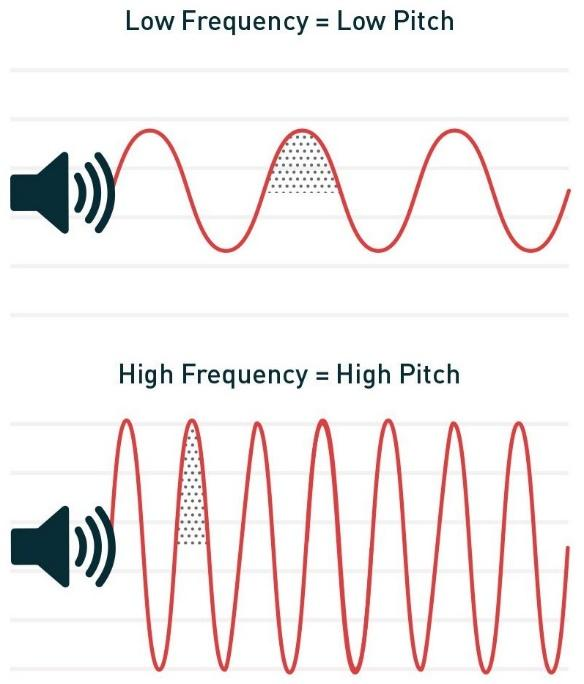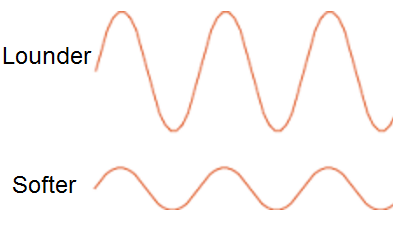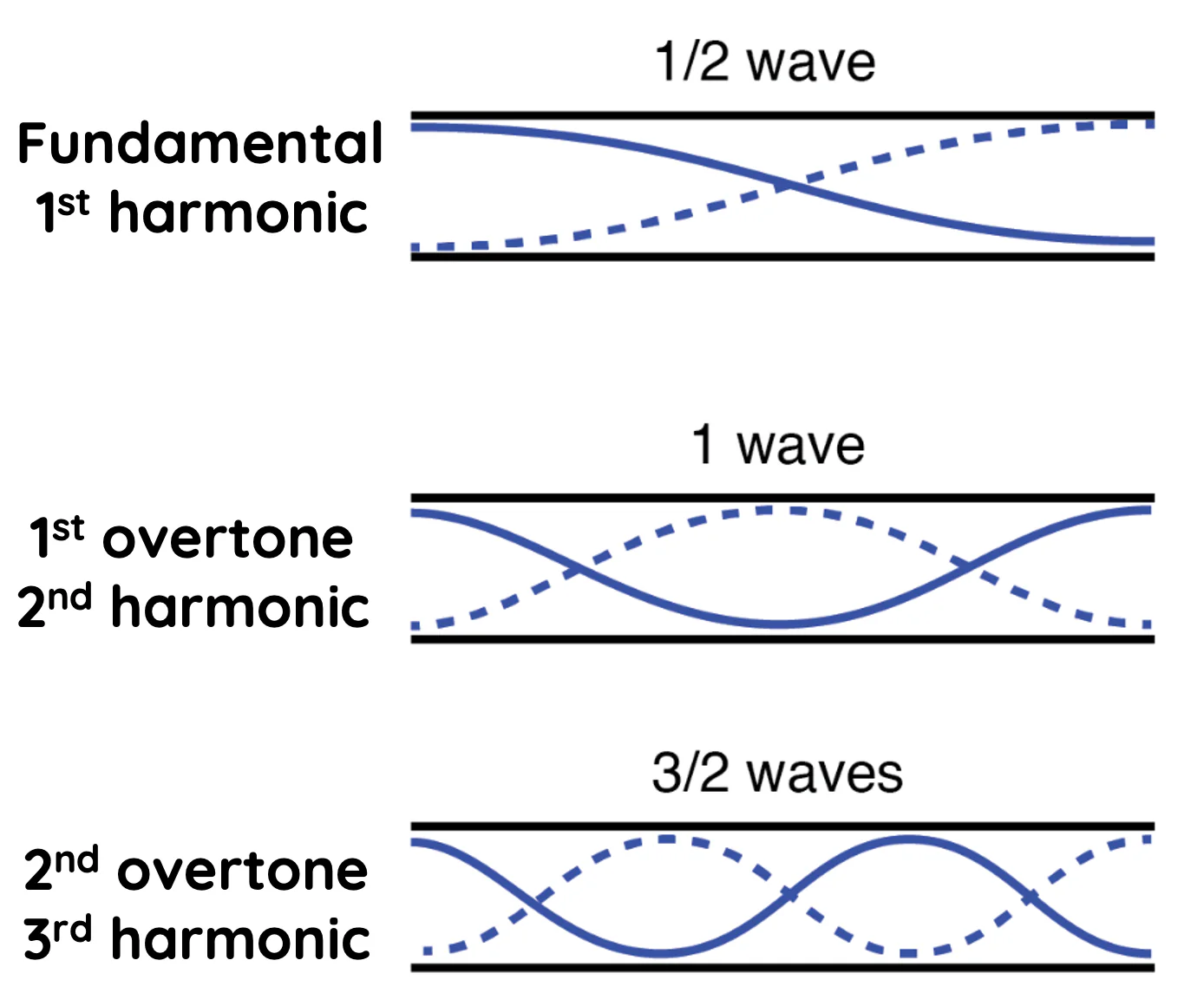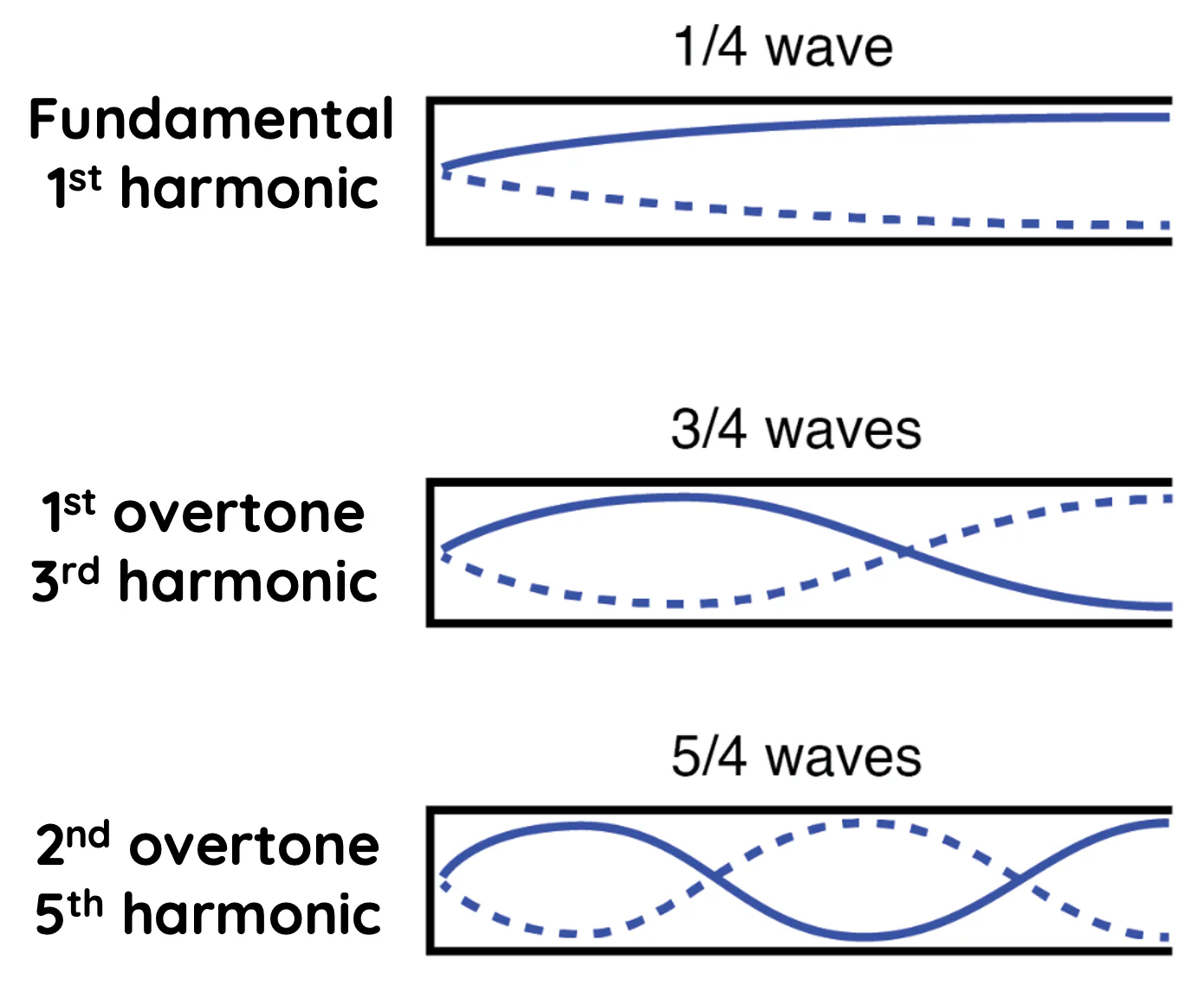waves
1/23
Earn XP
Name | Mastery | Learn | Test | Matching | Spaced |
|---|
No study sessions yet.
24 Terms
pitch
perception of the frequency of a sound wave

loudness
determined by amplitude of sound wave

where do strings (in SHM) have the most tension?
at the lowest point
(Ke is the highest)
open end pipes
ends of harmonics are antinodes
nodes = n
antinode = n+1
wavelength = 2L/n
frequency = nv/2L

closed end pipes
begins with node
nodes = antinodes = n
wavelength = 4L/n
n is odd
frequency = nv/4L

possible harmonics
open end pipes - any number
closed end pipes - odd numbers
fundamental frequency
n =1 (first harmonic)
relationship with overtones: fn = f1 * n
doppler effect
Frequency of sound (pitch) heard by the observer is higher when the observer and source get closer. When observer and source are farther, frequency gets lower
beat frequency
number of "beats" heard per second
fb = f2-f1
beat
two waves completely in phase
standing wave
stationary
remains in constant position
wave sources
amplitude
frequency
type of waves (transversal or longitudinal)
DO NOT affect speed
wave medium
density
tension
affect speed
traverse wave
disturbance and coil move perpendicular to each other; moves side to side
longitudinal wave
disturbance and coils move parallel to each other
constructive interference
when two pulses meet and they have an amplitude in the same direction → bigger wave
destructive interference
when two pulses meet and they have amplitudes in opposite directions → smaller wave
node (N)
location of minimum/no vibration
antinode (A)
location of max vibration